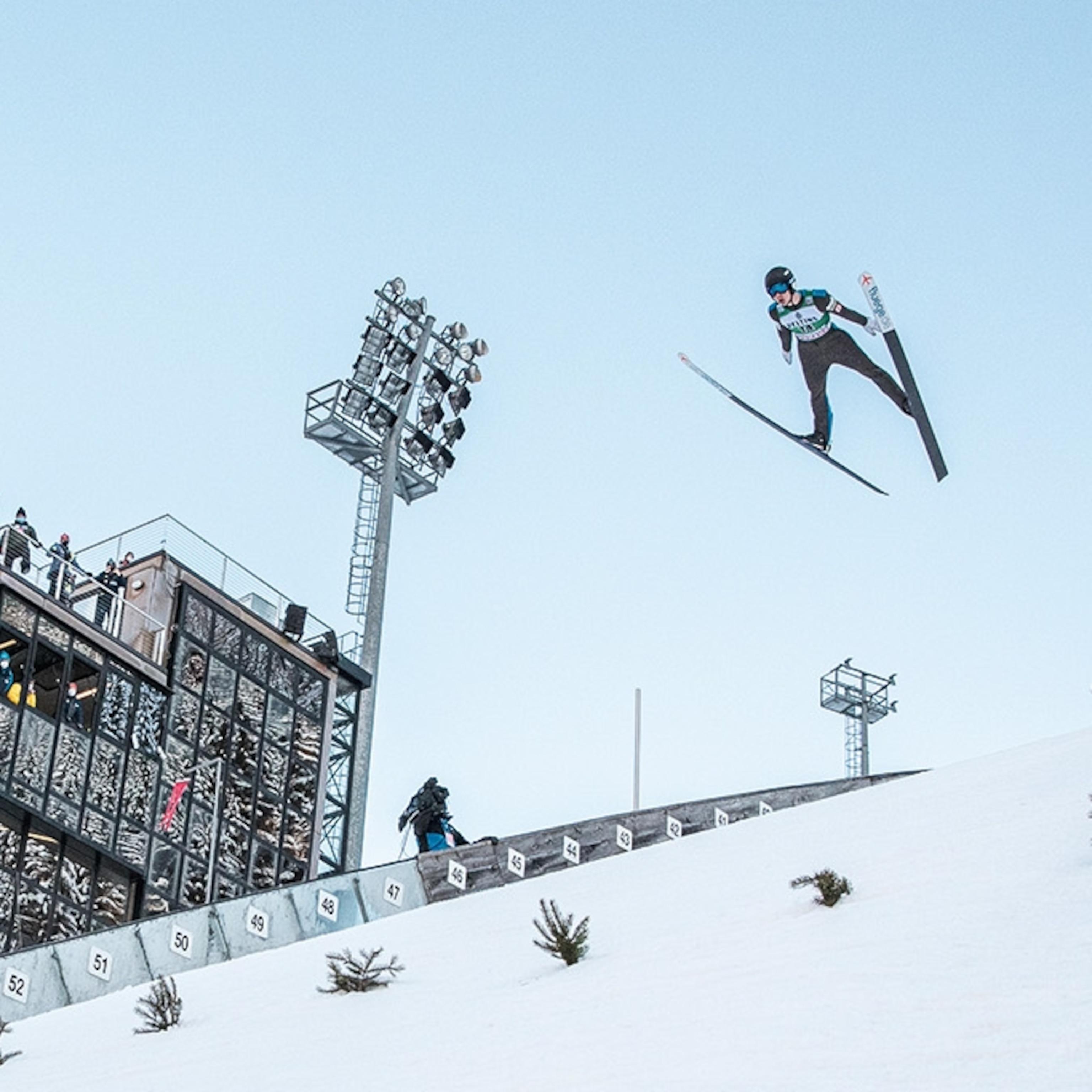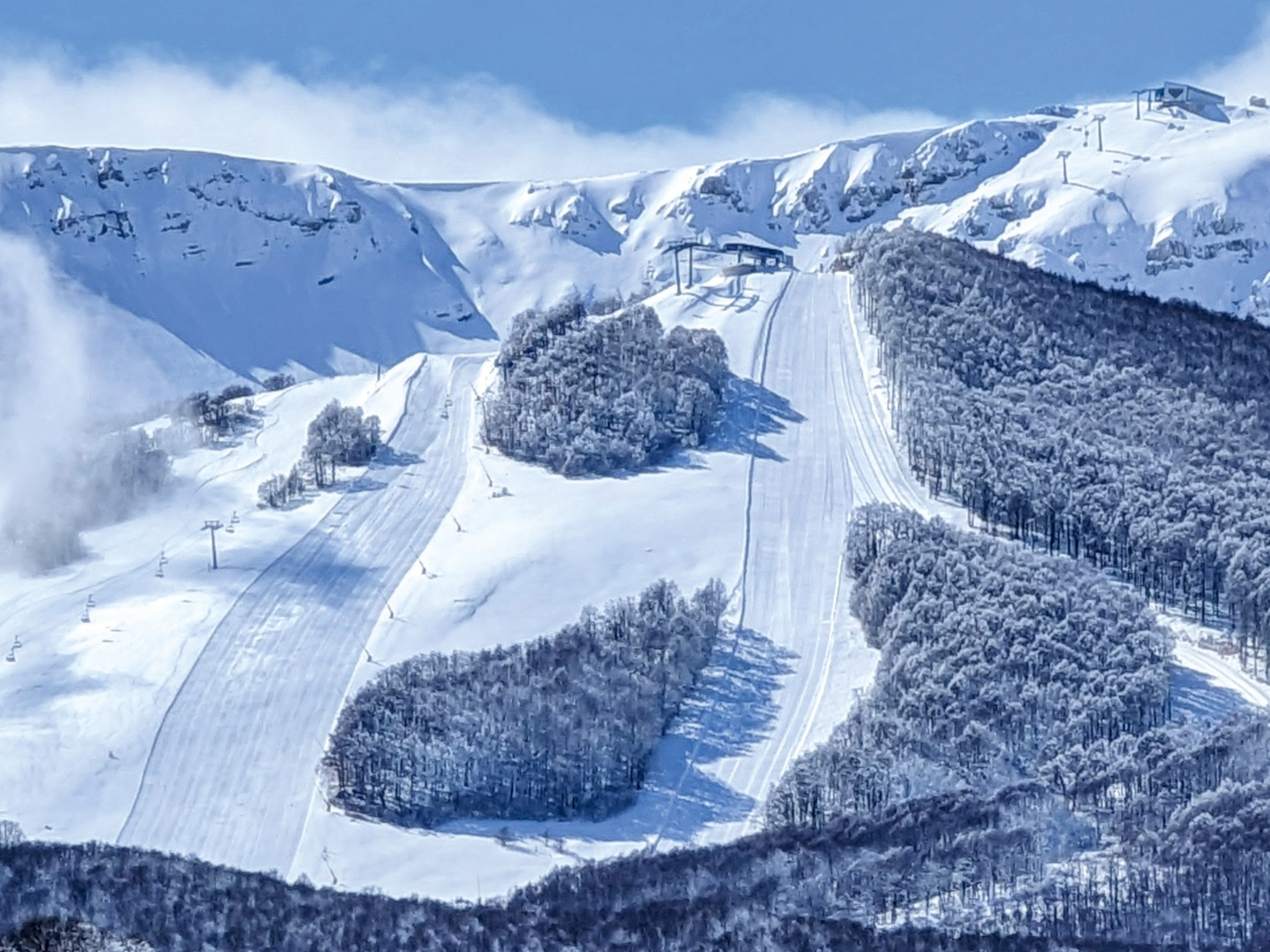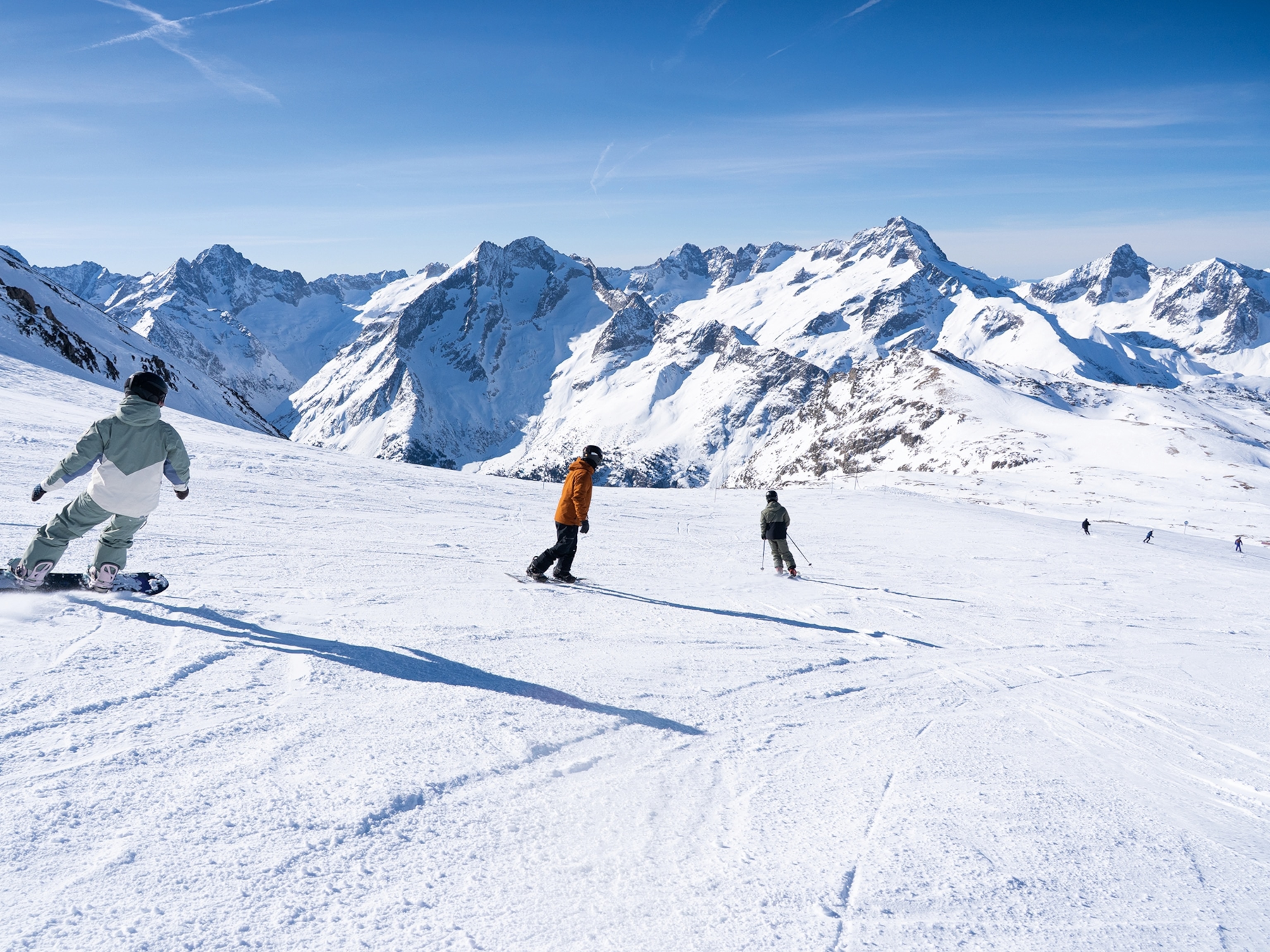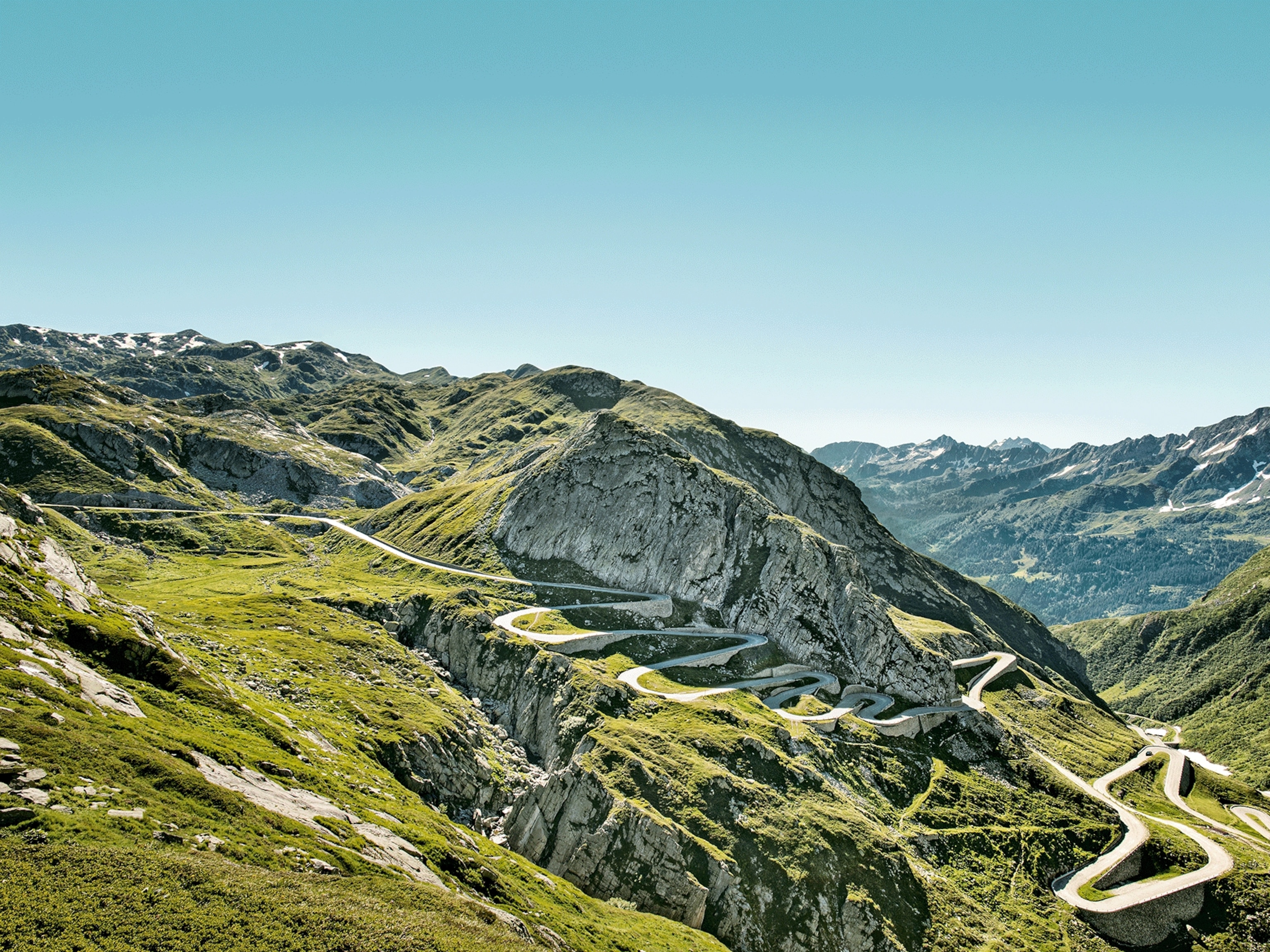
Iconic peaks and 500 miles of slopes: welcome to Switzerland's Bernese Oberland
With slopes for every ability, from beginner and intermediate skiing to challenging off-piste, heli-skiing and ski touring options, the Bernese Oberland is the place to be this winter.
Spectacular at any time of year, the Bernese Oberland in Switzerland really comes into its own in the winter. The region — in the southern part of the Swiss canton of Bern — has some of country’s most varied landscapes. It’s home to the iconic peaks of Eiger, Jungfrau and Mönch, along with more than 800 lakes, 500 miles of skiable terrain, 125 miles of winter hiking, 350 miles of cross-country skiing trails and endless climbing and ski touring opportunities.
The three Jungfrau ski resorts of Grindelwald, Wengen and Mürren are probably the best-known in the Bernese Alps and must-visits for any skier. The area has slopes for every ability, from beginner and intermediate skiing to challenging off-piste, heli-skiing and ski touring options. With incredible views and big vertical drops, the runs are long and well worth the climb. The region also has an incredible selection of toboggan runs, including the ‘Big Pintenfritz’ — the longest sledging run in the world.
The three resorts share a ski area, so choose to stay in central, car-free Wengen, reached only by a cog railway and famous for the Lauberhorn downhill races; Grindelwald for lively nightlife, or the smaller, cliff-top village of Mürren. Whichever you pick, you’ll be spoilt for choice when it comes to accommodation, from hostels and five-star luxury to traditional, family-run hotels, many of which are ski-in, ski-out. Grindelwald’s newest four-star hotel, the Aspen Alpin Lifestyle sits directly on the slopes, while the historic Hotel Bellevue des Alpes at Kleine Scheidegg, is also right in the heart of the ski area.
An hour and a half to the east by car lies Gstaad, an area which, despite its luxury reputation and world-class hotels, retains a down-to-earth feel to its main village and nine hamlets dotted up the mountain. There are pistes for all abilities with very few lift queues, as well as the only glacier skiing area in the Bernese Oberland. It’s ideal for both beginners (see box, right) and experts; Swiss Helicopter offers high-octane days out heliskiing on Gstellihorn with a guide for around CHF570 (£480). You can also go night-skiing here on the Rinderberg. Alternatively, Gstaad is renowned for its wellness offerings. The Six Senses Spa, for example, has a plethora of internationally recognised treatments, while the uniquely-designed le Grand Bellevue has jaw-dropping views out across the mountains.
Set in the heart of the Bernese Alps, the chalet-style mountain village of Adelboden is famous for its World Cup giant slalom, and races are held every January on the Chuenisbärgli, often drawing crowds of more than 30,000. While the village itself is set at 4,445ft, the ski area it shares with nearby Lenk extends up to 7,742ft and offers around 130 miles of piste skiing. Beginners have handy nursery slopes in the village and intermediates can happily explore the entire area. It’s a good resort choice for experts, too, with excellent off-piste opportunities on and around the plateau of Engstligenalp— the highest peak in the area — and Luegli at 6,860ft.
Lenk, meanwhile, is just under four miles from Adelboden, with its own separate slopes at Betelberg. There’s plentiful cross-country skiing here, with nearly 37 miles of trails stretching along the valley, a floodlit night trail in Adelboden itself and a cross-country centre at the bottom of the Metsch gondola (though make sure you buy a pass). A stay here can be made even more memorable by booking into the Berghotel Leiterli, a 70-bed, family-friendly hotel at the top station of the Lenk-Betelberg cable-car.

Three ways to ski the Bernese Oberland
1. Head for heights
Take the cogwheel train through the Eiger to Jungfraujoch. At 11,333ft and almost at the top of the Jungfrau, it’s the highest railway station in Europe. From there, take a lift 383ft up to the Sphinx Observatory, with its 360-degree views and multiple restaurants. Rather than simply going up to sightsee though, hire a mountain guide for a day of ski-touring.
2. Go ski racing
The world’s largest, and longest, downhill ski race takes place in Mürren every January. Organised by the Kandahar Ski Club, one of the world’s oldest ski clubs, the Inferno is contested by some 1,850 competitors, starting from the Schilthorn at 9,744ft and finishing in Lauterbrunnen at 2,624ft; that’s a descent of almost 10 miles.
3. Sledge the slopes
There are six specially-designed sledge runs in Gstaad, including three new ones that opened last year. The challenging Saanersloch Run has some steep sections that are both challenging and exhilarating, while for younger sledgers, the Hornberg Run is mostly wide and straight.
To find out more, visit madeinbern.com/winter-activities
Essentials
Getting there and around: Known as The Skiers Airline, SWISS operates up to 180 weekly flights to Zürich and Geneva from London, Manchester, Birmingham, Edinburgh and Dublin. Fares start from £51 one-way and the carrier also offers free ski carriage. The easiest way to get around is by train; from Zürich to Lucerne takes 45 minutes, while Arosa Lenzerheide takes a little over two hours. If you’re travelling to Valais, you’ll want to fly into Geneva, while the Bernese Oberland sits between the two and from both airports, the journey will around two hours.
When to go: Switzerland’s winter season runs from December until April, although it’s possible to ski on glaciers such as Glacier des Diablerets in the Bernese Oberland from October until May, and all year on Saas-Fee and Zermatt in Valais.
To find out more, visit myswitzerland.com
Published in the National Geographic Traveller (UK) Winter Sports guide 2019
Sign up to the National Geographic Traveller (UK) newsletter and follow on social media:






